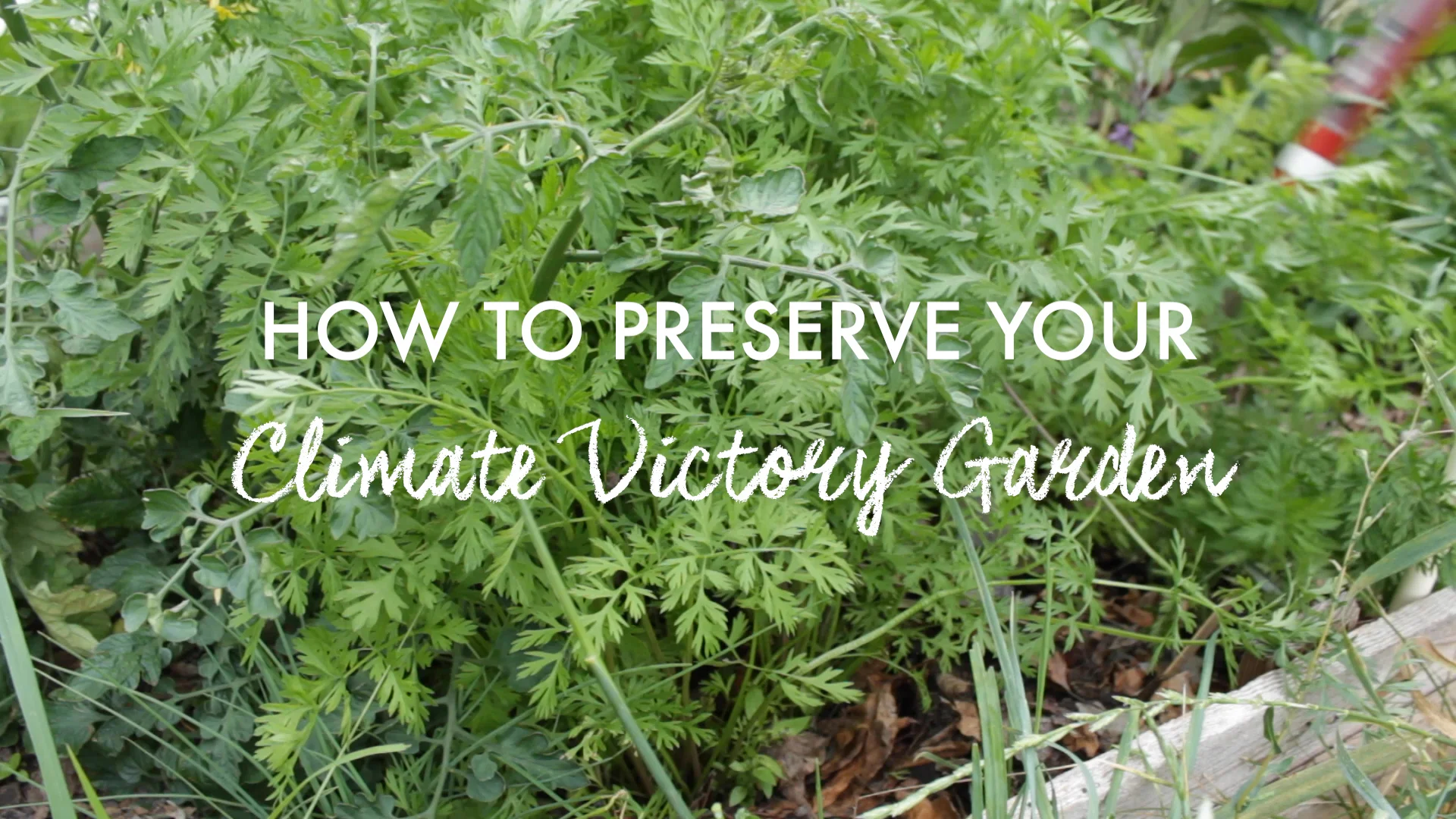One way to lower food waste? Make pickles. Here’s how.
Maybe you've become inspired by all our talk of Climate Victory Gardens and actually planted one. (Good for you!) And maybe you now have more peppers, beans, and veggies than you know what to do with. (Congratulations!) Here's a quick (less than a minute!) lesson on pickling whatever you'd like, so you can enjoy your harvest well beyond its expiration date.
What is pickling?
Pickling = controlled decay. With vinegar pickling, we are creating a highly acidic environment that inhibits the growth of harmful bacteria, thereby preserving our veggies. With quick pickling we are using refrigeration as second line of defense against bacterial growth - but remember, refrigeration does not kill bacteria, it only slows their growth. So, our motto going forward is, “Keep it clean!” If you start with clean veggies and a sterilized jar, and only use a clean utensil when you go in for a snack, your pickles will keep in the fridge for up to a year - if they even last that long.
What can I pickle?
Will it pickle! YES! (with very few exceptions).
Carrots, onions, cucumbers, garlic, peppers, celery, cauliflower, fennel, green tomatoes, beans, peas, swiss chard stems…
Fruit too: cherries, peaches, pears, apricots, watermelon rind…
In my experience, the only things that don’t stand up well to pickling are leafy greens and herbs, and fruit with delicate skin, such as raspberries or tomatoes. Those delicate souls will simply disintegrate into the brine.
What’s a brine?
Vinegar - The vinegar is doing the bulk of the preservation here, but that doesn’t mean it can’t also add flavor. Why not try balsamic vinegar for pickling cherries, or rice wine vinegar for an asian inspired pickle? Think about the flavor of the vinegar and how it might pair with the ingredient you are pickling.
Salt and Sugar - Salt and sugar are also agents of preservation, but since we are relying on the refrigerator to keep the bacteria at bay, you have more flexibility on the amount of salt and sugar you choose to add. Do you like sweet, bread’n’butter pickles? Add more sugar. Are you cutting back on salt? Add less. Trust your tastebuddies!
Spices - Using whole spices, my general ratio is 2-3 tablespoons per pint of pickles. Limit yourself to 1-2 pieces when using strong spices like cinnamon, cloves, star anise, and allspice. Be creative with your spice blends! I have provided a few jumping off points below.
General Brine Recipe
2 parts vinegar
1 part water
salt and sugar to taste
General Process
Thoroughly clean all fruits and vegetables with clean water. Sterilize all jars and lids by boiling for 5-10 minutes.
Add whole spices and chop vegetables to the sterilized jar.
Mix all brine ingredients in a sauce pot and bring to a boil.
Pour hot brine into jar.
Seal the jar with a sterilized lid, and place into the refrigerator.
Leave pickles to cure for one week before enjoying.
Moroccan Pickles
2 C apple cider vinegar
1 C water
1 t salt
2 T sugar
1 t coriander seeds
1 t fennel seeds
1 t cumin seeds
3 allspice berries
1 whole chili, dried
1 garlic clove
Pickled Pears
1 C apple cider vinegar
1 C white wine vinegar
1 C water
1 t salt
2 T sugar
1-2 cinnamon sticks
1-2 star anise
1-2 cloves
Cider Dill Pickles
2 C apple cider vinegar
1 C water
1 1/2 T salt
1 T sugar
2 garlic cloves
1 t red pepper flakes
1 T dill seed
2 t peppercorns
Bread’n’Butter Pickles
2 C apple cider vinegar
1 C water
1 t salt
2 T sugar
2 T mustard seed
2 t celery seed
1 t turmeric
1 t red pepper flakes
1-2 cloves










